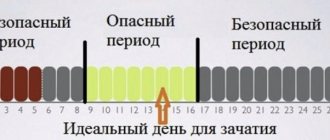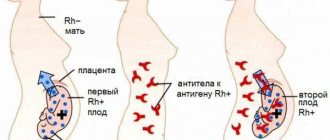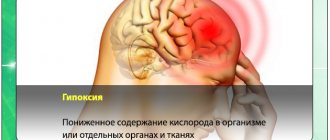Author: Tselmer N.E., obstetrician-gynecologist, first qualification category. March, 2021.
Abortion is the artificial termination of pregnancy up to 22 weeks.
Currently, there are several methods that are used depending on the period. Important! At the woman's initiative, abortion is carried out only up to 12 weeks.
Further - exclusively according to strict indications. Vacuum abortion - removal of the fertilized egg using vacuum suction:
- Up to 6 weeks: performed without cervical dilatation on an outpatient basis (mini-abortion);
- 6-12 weeks: performed in the hospital with dilatation of the cervix.
Medicinal - produced with the help of medications (mifepristone, pencrofton) that provoke a miscarriage:
- Up to 9 weeks: drug interruption can be carried out on an outpatient basis;
- 9-12 weeks: only in hospital;
- Weeks 12-22: carried out strictly according to indications in a hospital setting.
Curettage (surgical abortion) is an operation during which the doctor scrapes the uterus with a sharp obstetric curette and removes the fertilized egg. Currently, it is recommended extremely rarely due to the high likelihood of complications:
- Weeks 6-12: performed only in a hospital under general anesthesia.
- After 12 weeks, dilation of the cervix and curettage with sharp surgical instruments are not performed due to the large size of the fetus and the pregnant uterus. The walls of the uterus become soft and stretched, they are easily perforated (accidentally pierced) with instruments to dilate the cervix and evacuate the fertilized egg. In this case, the danger from surgery is too high for a pregnant woman. Curettage of the uterus over a long period of time is possible only after a miscarriage has occurred with a contracted uterus (this sometimes has to be done in the case of remnants of the fertilized egg in the uterus and signs of bleeding).
Any abortion, as a serious medical intervention, inevitably carries with it the risk of complications. Some negative consequences and complications after an abortion may be characteristic of a particular method of termination of pregnancy.
Possible complications
For medical abortion
Medical termination of pregnancy is considered the safest, but it also carries risks.
- uterine bleeding requiring instrumental evacuation of the uterus in a hospital (vacuum aspiration of the uterine cavity) and the use of uterine contractions;
- incomplete abortion (remnants of the fertilized egg are also removed using vacuum aspiration of the uterine cavity in a hospital);
- infectious complications (the risk of their development is less than 1% of cases);
- progression of pregnancy in a situation where rejection of the fertilized egg has not occurred.
For vacuum and surgical abortion
Early complications
Occurs directly during the procedure and on the first day of the postoperative period
- Bleeding during the procedure can occur if the patient’s blood coagulation system is disrupted, as well as if there is no proper contraction of the uterine walls during the procedure. The walls of a uterus that has given birth many times or suffered a large number of abortions contract poorly (defective muscle tissue). This condition requires the use of large doses of drugs that contract the uterus; in very rare cases, if it is impossible to stop the bleeding, the uterus is removed. In case of disorders of the blood coagulation system, replacement of coagulation factors is carried out through the use of drugs or blood transfusions.
- Perforation of the uterus (accidental puncture) rarely occurs during a vacuum abortion, since sharp instruments are not used. However, although rare, this can occur when the cervix is dilated or the length of the uterine cavity is examined using a uterine tube before the procedure.
- When performing curettage using a sharp curette, the risk of perforation of the uterine wall increases. A sharp instrument can penetrate the wall of the uterus and injure the adjacent intestinal loops and bladder. In this case, the abortion operation ends with a transition to abdominal surgery (for suturing an intestinal wound, for example, or stopping bleeding from a perforated uterine wall).
- Directly during the procedure, an allergic reaction to anesthetic drugs may occur.
- When the cervical canal expands, the cervix may be injured.
Late complications
May be observed within a week or several months after surgery:
- After an abortion, bleeding normally continues for several days. Sometimes after an abortion and dilatation of the cervix, the cervical canal closes too early, blood accumulates in the uterine cavity and a so-called hematometer complication occurs. Such a complication can be suspected if, the next day after the abortion, a woman complains of sharp pain in the lower abdomen and notes the cessation of bleeding from the genital tract on the first evening. Hematometra is also visible on ultrasound (the uterine cavity is clogged with blood clots and the cervix is closed). Depending on the volume of accumulated blood, this situation can be resolved with the help of medications or re-expansion of the cervical canal and vacuum aspiration of clots. This complication can be prevented by taking antispasmodics the evening after an abortion (for example, 1-2-3 tablets of drotaverine or no-spa).
- Prolonged bleeding, as well as pain in the lower abdomen, may indicate that the procedure was not completed completely and embryonic elements remained in the uterine cavity, which can initiate serious inflammatory processes. In case of incomplete abortion, there is a need for additional surgical intervention (scraping out the remnants of the fertilized egg from the uterine cavity).
- Placental polyp - on a control ultrasound 2-4 months after an abortion, a polyp-like outgrowth of the uterine cavity appears. Clinically, this may manifest as painful and irregular menstruation after pregnancy loss. A placental polyp grows from the remains of the tissue villi of the fetal egg. The placental polyp also has to be removed under anesthesia, with dilation of the cervix, usually using a curette and a hysteroscope (an instrument with a video camera for examining the inside of the uterus).
- Post-abortion depression.
Inflammation after abortion
Another late complication of abortion may be the addition of an inflammatory process. During an abortion, this usually occurs if the patient has a weakened immune system and there is a chronic infection in the lower genital tract. Even after sanitizing the inflammatory type of smear before an abortion, aggressive microorganisms may remain in the genital tract, which, when instruments are inserted into the uterus, enter it from the vagina. Microtraumas of the walls and cervix contribute to the development of inflammation.
In case of acute inflammation, the patient will have:
- pain in the lower abdomen,
- fever,
- purulent or mucus discharge from the genital tract.
This is a clinic for endometritis (inflammation of the uterine lining). From the uterus, the inflammatory process can spread upward through the fallopian tubes and into the pelvis.
When inflammation and pus appear in the fallopian tubes, salpingitis develops.
When the ovary is pulled into the process, salpingoophoritis occurs and adhesions are formed between the ovary, tubes and uterus.
After treatment, patients may be bothered by “leucorrhoea” from the genital tract for a long time.
When pus flows from the fallopian tubes into the pelvic cavity, peritonitis develops, inflammation and adhesions spread to neighboring organs (intestinal loops, bladder). Long-term anti-inflammatory and antibacterial therapy will be required; in the presence of pus in the fallopian tubes and pelvis, surgical treatment will be required.
Types of abortions
Abortion involves the termination of pregnancy before 12 weeks. In later periods, manipulations can be carried out in exceptional cases for medical reasons. Abortions are classified as follows:
- Surgical. This is a common surgical procedure. The method involves removing the embryo from the uterus using curette curettage using special instruments. Manipulations are carried out up to 12 weeks.
- Pharmaceutical. This is a non-surgical method. To terminate pregnancy, special medications are used that slow down the effects of progesterone and provoke fetal rejection. The procedure can be effective for up to 6-7 weeks.
- Vacuum. These are mini-abortions that have a gentle effect on the body. They involve the use of special vacuum suction units. The procedure is indicated up to 5-6 weeks.
Long-term consequences
May be observed years after surgery:
- After an abortion, there is always a risk of hormonal shifts, which may disrupt the menstrual cycle and the normal maturation of follicles in the ovaries. This, in turn, increases the risk of endocrine factor infertility.
- The above-described inflammatory processes of the genital organs can lead to the development of adhesions and obstruction of the fallopian tubes (hereinafter referred to as tubal factor infertility). Inflammation of the uterine mucosa is also a common cause of menstrual irregularities.
- Past inflammatory processes and the presence of adhesions in the pelvis can cause chronic pelvic pain syndrome in women, which is very difficult to correct.
- The cervix, injured during an abortion, may not sufficiently perform a locking function during pregnancy. Due to cervical insufficiency, pregnancy losses may occur at various stages or create indications for surgical sutures on the cervix to preserve the pregnancy.
Where can you consult a doctor?
Recommendations for rehabilitation after an abortion are prescribed by the attending physician. If you live in the city of Sochi and had a medical abortion at home or experienced a miscarriage and do not have recommendations, but want to discuss everything with a specialist, contact the Family Clinic of Dr. Ekaterina Kurguskina.
The clinic’s website contains all the necessary information for communication, there is a list of services and a map showing the location of the institution.
The doctors of the clinic will take care of you and your health!
Find out the cost to a specialist
Effect on subsequent pregnancies
If the abortion proceeds with complications, then this may come back to haunt the woman with an unfavorable course of the subsequent desired pregnancy.
- Firstly, in patients with inflammatory diseases of the female genital organs and adhesions in the pelvis, an ectopic pregnancy may occur after a complicated abortion. This happens because the fallopian tubes, as a result of inflammation, become tortuous, swollen, with kinks due to adjacent adhesions, and the movement of the egg through them is difficult.
- If a fertilized egg enters the uterine cavity with chronic inflammation of the mucous membrane after an abortion, it may not fully attach to the wall of the uterus. This leads to missed abortion or bleeding and pregnancy loss. If the pregnancy takes root and develops further, then the placenta, attached to the defective wall of the uterus, may be thin and not provide nutritional function; ultrasound may describe oligohydramnios or polyhydramnios, and the child’s growth retardation.
- If a woman’s abortion was complicated by perforation of the uterine wall, she now has a scar on the uterus. During pregnancy and childbirth, some scars on the uterus are incompetent (this is rare, but uterine rupture due to an incompetent scar does occur in late pregnancy and childbirth).
- If during an abortion the dilatation of the cervix was carried out traumatically, then during the next desired pregnancy, cervical insufficiency (isthmic-cervical insufficiency) may appear. This is clinically manifested by signs of threatened miscarriage, premature dilatation of the cervix, and may result in miscarriage. Sometimes during pregnancy, cervical insufficiency must be corrected by applying a suture or installing a relief pessary.
- If a patient with an Rh-negative blood group has an abortion from an Rh-positive partner, then Rh incompatibility with the unborn child may occur in her body during the next pregnancy. To prevent this complication, it is recommended that Rh-negative women always receive a dose of anti-Rhesus immunoglobulin during an abortion.
conclusions
Abortion is a strong stress for a woman’s body, which causes various disturbances and disruptions in its functioning. If a woman has doubts about the normality of events occurring after an abortion, she should consult a gynecologist to assess her health.
MAKE AN APPOINTMENT
[contact-form-7 id=”296″ title=”Untitled”]
Abortion and contraception clinic in St. Petersburg - department of the medical gynecological association "Diana"
Make an appointment, tests or ultrasound via the contact form or by calling +8 (812) 62-962-77. We work seven days a week from 09:00 to 21:00.
We are located in the Krasnogvardeisky district, next to the Novocherkasskaya, Ploshchad Alexander Nevsky and Ladozhskaya metro stations.
The cost of a medical abortion in our clinic is 3,300 rubles. The price includes all pills, an examination by a gynecologist and an ultrasound to determine the timing of pregnancy.
Recovery and rehabilitation after abortion
The length of the recovery period is influenced by the woman’s age, her state of health, the number of previous abortions and the presence of children. Abortion is easier for healthy young women who already have children.
Medical rehabilitation involves providing rest to the female reproductive system, which has suffered a hormonal explosion due to artificial termination of pregnancy. Due to changes in hormones, the menstrual cycle may not be restored, and cysts often appear in the ovaries and mammary glands. For at least six months, there should be no next (wanted or unwanted) pregnancy, and there should be no sharp fluctuations in the woman’s hormonal levels. A woman must understand that the next abortion will worsen the hormonal imbalance in the body. You need to provide yourself with a reliable means of contraception.
If the abortion is complicated by an inflammatory process, then the period of rehabilitation and recovery should additionally include measures to restore normal microflora in the vagina, physiotherapeutic methods of prevention and resorption of adhesions of the internal genital organs. The woman is prescribed electrophoresis on the lower abdomen with anti-inflammatory drugs, sanatorium treatment, hirudotherapy, laser irradiation and ultraviolet irradiation of the blood, enzyme preparations to reduce the severity of the adhesive process.
Another important component of recovery is psychological rehabilitation. Women may develop depression, feelings of guilt, and impaired sexual function. Therefore, in many cases, the help of psychologists is recommended.
Psychological recovery
Terminating a pregnancy, regardless of the method chosen, can cause serious psychological distress.
Some women are able to cope with it on their own or with the help of loved ones, while others require the help of specialists. In the second case, you should not refuse it, because a qualified psychologist can give good advice. This article is posted for educational purposes only and does not constitute scientific material or professional medical advice.
Sex and pregnancy after abortion
After an abortion, it is recommended to abstain from sex for at least 3 weeks. The fact is that after an abortion, the inner surface of the uterus is an extensive wound surface, very vulnerable to any infection. During sex immediately after an abortion, the likelihood of infection increases significantly, which can cause serious complications.
Another reason for limiting sex after an abortion is the high probability of another pregnancy.
Unfortunately, no method of contraception currently provides a 100% guarantee, and until the frequency of the menstrual cycle has been established, the likelihood of pregnancy after an abortion is high, even if the woman considers these days to be “safe.”
Pregnancy immediately after an abortion is very dangerous for the body, which has not yet had time to recover. In addition, a fertilized egg that attaches to fresh scar tissue will receive little nutrition.
Important! It is recommended to plan a pregnancy after an abortion no earlier than six months later. During this time, it is necessary to use contraception during sex.
Surgical abortion. Hormonal changes
Surgical abortion is performed before the 12th week of pregnancy and is the most traumatic among all types of abortion. The endocrine system is especially affected. By the 11th, the concentration of human chorionic gonadotropin reaches its peak, so abortion causes its sharp drop.
The hormonal system is under extreme stress. The corpus luteum does not dissolve for a long time, and the body remains for a long time in a state similar to that which occurs before ovulation. For this reason, menstruation after an abortion occurs very late, sometimes only after hormonal therapy.
Which contraception to choose
The most convenient ones after an abortion will be combined oral contraceptives (COCs), or their non-tablet analogues. When using COCs, a woman’s body will maintain a constant hormonal level without fluctuations, so the ovaries and mammary glands will be in a “resting state” (that is, cysts will not appear in them). The uterine lining will also regenerate under protected conditions.
Important! In no case is it recommended to protect yourself with disposable emergency contraception after unprotected sexual intercourse (for example, the drug “postinor” or “escapelle”).
Such drugs contain hormones in large doses; they will also be stressful for the body and can provoke endocrine function disorders. Many women with irregular sex life use emergency contraception several times a year, and then end up with an unbalanced hormonal system, excess weight and menstrual irregularities.
For permanent contraception, it is also possible to use a condom and an intrauterine device. But for reliable results when using condoms, discipline of both partners is needed, in addition, buying high-quality condoms is now more expensive than a package of COCs. The intrauterine device is a capricious method of contraception; it is not suitable for all women, and is not recommended for use at all in patients at risk of inflammatory diseases. On the other hand, this is a budget-friendly, cheap contraceptive option.
Advantages of treatment at SM-IVF
"SM-IVF" is a clinic that specializes in reproductive health issues.
Our center has introduced advanced medical advances that allow us to provide care at the most modern level. This guarantees a high degree of safety and the best therapeutic result. A personalized approach is applied to each patient, taking into account the characteristics of her body’s condition. Innovative diagnostic and treatment methods help make your cherished dream of becoming parents come true. The clinic guarantees complete confidentiality. SM-IVF specialists will conduct a comprehensive examination of the reproductive system and draw up an individual treatment and rehabilitation program aimed at quickly restoring fertility. We will help solve your problem based on the best global medical experience.
Prevention of complications
Following a few simple rules can significantly reduce the risk of complications after abortion.
- Show up early for an appointment (the shorter the pregnancy, the more gentle the termination method can be used, for example, limiting yourself to a mini-abortion or medication);
- Carry out instrumental abortion only with a sanitized vagina (degree of vaginal cleanliness 1-2);
- Antibacterial prophylaxis of infectious complications once on the day of abortion in all patients;
- A course of antibacterial therapy in patients with chlamydia, other infections and patients at risk of developing an infectious process;
- Carrying out the prevention of Rh immunization and Rh conflict (administration of anti-Rh immunoglobulin to Rh-negative women);
- Prohibition of sex in the first three weeks after an abortion,
- Monitoring discharge that appears after an abortion and, if necessary, consulting a doctor,
- Carrying out an instrumental abortion procedure with an empty bladder and intestines;
- Compliance with hygiene rules, selection of a suitable method of contraception;
- Perform a control ultrasound of the pelvic organs;
- Visit a gynecologist at least once every six months.
Sources:
- Clinical recommendations of the Ministry of Health of the Russian Federation (treatment protocol) “Medical termination of pregnancy”, Moscow, 2015, team of authors.
- "National Guide to Gynecology", ed. IN AND. Kulakova, G.M. Savelyeva, I.B. Manukhina, 2009.
How to eat during rehabilitation
Nutrition will help restore the body after an abortion due to the intake of nutrients from food. It is necessary to eat a lot of protein, vitamins, and minerals. Cold drinks and foods (ice cream) should be avoided.
Useful recipes for recovery:
- Turmeric with milk Good for the blood and strengthens the immune system. In a saucepan, fry 1 teaspoon of turmeric in 1 tbsp. spoon of butter, then add ground almonds and pistachios, pour in a glass of milk, bring to a boil, add sugar to taste. Drink 2-3 times a day.
- Egg and Milk This protein-rich drink quickly increases the production of red blood cells. One raw egg is added to boiled milk, mixed and drunk as tea 2 times a day, preferably before bed.
- Blackcurrant with almonds Grind the currants to a puree, add 5-6 ground almonds and 2 cups of milk, boil until the liquid has evaporated by half.
- Milk with saffron Boil a glass of milk, add saffron, stir and drink at once.
- Orange juice Many patients complain of joint pain, for which it is recommended to consume a lot of vitamin C. 2-3 glasses of orange juice will replenish the vitamin supply.
- Carrots have the ability to stimulate the immune system and remove toxins. Helps against dehydration and constipation. Recommended both in raw form and as an additive to dishes for the daily diet.
- Broccoli is a source of anti-inflammatory phytonutrients that are essential to avoid the onset of inflammatory processes in the body.
Following the doctor's recommendations, a healthy diet, limiting physical activity and healthy sleep will help restore the body and bring all systems and processes back to normal. Don’t rush to self-prescribe medications and vitamins. Some women are able to recover from an interrupted pregnancy in a month, while others need 6 months. Compliance with recommendations and timely visit to the hospital is help for your health.










